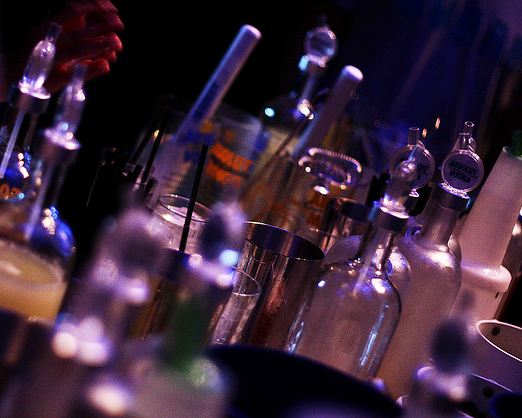
I have never had a drink. But only one night sufficiently confirmed my outlier status.
A few weeks ago, I asked a friend to accompany me on a “tour” of the party lifestyle I had experienced so little. Thus, at 10 p.m. one Saturday, I set forth into the nightlife with my guide. Our first stop: a house of mutual friends. When I crossed the threshold, a strange mix of happiness, surprise, and—as a friend told me later, terror—resulted from those inside. Nearly all present knew of my abstinence; my appearance surprised them. But they welcomed me nonetheless.
I settled into a comfortable chair to observe, my guide adjacent. I looked to several friends seated around a circular table, wearing an assortment of hats—sailor, construction, penguin—while playing cards between sips of beer. Occasionally, some in the group stuck cards to their heads; when enough did, they shouted “GET THE PRESIDENT!” Then, those with cards affixed tackled whoever had failed to catch on. My guide helpfully informed me that I was watching “pre-gaming.” This would constitute a mere prelude to the night’s true fun. As my guide put it “they were drinking to get drunk later.”
Our discussion—periodically punctured by shot ingestion, en masse tackling, hat dysfunction, and another friend asking me “Do you want a story?” before stabbing a full beer can and downing it all in seconds—continued onto feelings from successive beers and the difference between fainting and blacking out. Soon, the house decided to move to an actual party, so we began a long, cold walk to a party house. I drove there, but it proved empty. I parked my car and then joined the group as they searched for another house. We came to it soon enough.
Cars filled its driveway and yard, as well as the street in both directions. From its windows, blues and pinks burst through a weak darkness. We walked into the house to a thumping bassline. Entering brought a wall of warm, sweat-humid air, and dozens of bodies grinding up against one another, almost trying to move to the beat of whatever processed synth-rap pop happened to be playing. After an hour of watching this, I had enough. A sober friend drove me back to my car. As I exited, a drunken friend admonished that “there’s something rotten in the state of Denmark!” So went my night out.
Whether it was typical or tame, I may never learn firsthand. Relevant data suggest the former. According to the Century Council’s 2011 Monitoring the Future Study, 81 percent of college students have tried alcohol; 68 percent admit to genuine inebriation; and 36 percent engaged in “binge drinking,” loosely defined as consuming four to five alcoholic units (12 oz. of beer, a glass of wine, a shot, etc.) in a short time. What I observed dispassionately, then, features heavily in college life, among all groups. A visit to any campus—either on a weekend night, while parties rage, or on the next morning, with their scattered detritus—proves that easily. The more pressing and less clear issue is, simply, why? What drives college students and young adults to imbibe more heavily than any other age group, according to the 2000 National Household Survey On Drug Abuse survey of Alcohol Use? Broadly speaking, there are two reasons.
First, there is the outdated social infrastructure of modern higher education. Until quite recently, attending college remained an elite privilege. Now, cultural pressure pushes virtually all students toward college. Whatever the merits of this push, it has had undeniable effects: college attendance has increased from about 2.7 million in 1950 to 14.8 million in 2000, according to the National Center for Education Statistics. This nearly sevenfold increase has strained a system designed for fewer, while also extending the period of adolescence to unprecedented length. The result, as David Jernigan, director of the Center on Alcohol Marketing and Youth at the Bloomberg School of Public Health, put it, is a lack on today’s college campus of alcohol policies backed by empirical evidence; the modern university, that center of cultural change, has not changed itself.
Add to this the nature of college students even before the expansion occurred, and which has become truer as its result: they often arrive unsure of themselves; most enjoy more of the privileges of adulthood than its responsibilities while there; and exist in the most social “immortal” period of their lives while surrounded by hundreds in the same position. The greater wealth of the new generation of college attendees—or, rather, of their parents—also contributes, as does the abandonment of most higher education institutions of the search for Truth that defined them before the turbulence of the 1960s.
And the second reason? “College students drink because they can,” Jernigan said. Alcohol is cheap, readily available, and socially acceptable. Even more important than its availability is its efficacy.
“Most people are doing it because for them, alcohol is the transfer ramp from daily ‘me’ to social ‘me,’” says a friend who has been part of this culture. “Alcohol just smoothens the transition, and because it is so easy and so culturally accepted to do in college, there’s no social backlash of doing so.”
As recovering binge-drinker Toren Volkmann writes in From Binge to Blackout, when abstinence looms: “How can I find a new identity when I used to drink mine by the fluid ounce and juggle reality?” Alcohol, in short, has a social function beyond mere hedonism, beyond mere bacchanalia; it is a social lubricant that, in its own way, brings students together—which is why modern collegiate drinking only extends from its past incidence (just ask any parent about 3.2 beer), rather than being a recent development. No effort to solve the problem of binge-drinking can deny that.
So, what is the problem? If alcohol will always be with us, and if to deprive students is to remove an essential part of the college social experience, why do anything? In a word: excess. Three shocking results of college drinking, says Jernigan, say it all: 1800 student deaths a year, 600,000 injuries, and 100,000 rapes—“not to mention the stuff you can’t count,” like debauched human capital. Underage drinking is not inherently evil, even if technically illegal. But the scourge is excess. Alcohol in excess exacerbates the human character.
What, then, is to be done? Shall we lower the drinking age, to coax the binge from the fringe? Let’s hope not; multiple studies, according to the CDC, attest that age 21 minimum legal drinking age laws result in lower levels of alcohol consumption among young adults both over and under 21. Shall we proliferate and promulgate more DARE-style programs that encourage abstinence—a worthy ideal—from a position of condescending moral separation? Not if we don’t want a negative feedback cycle. Shall we tinker around the edges with “drunk buses” and official college parties? Closer, but still no: such steps take the first necessary step of acknowledging the problem, but ultimately concede mitigation.
The answer to this problem lies in no panacea. It begins instead with a realization of its existence and a commitment to discuss and to act upon it honestly. On the campus, administrators will have to update their policies (and enforce them consistently) not just to recognize but also to remediate alcoholic excesses, rather than simply to pretend they do not exist to preserve perversely both institutional and student reputations. Students must honestly assess themselves and one another, commit to one another’s well-being and to moderation, involve themselves in administrative efforts to improve campus policies, and work to vitiate a social atmosphere in which, as ABC News reported, “Binge Drinking College Students Report Being Happier”—not because of the effects of alcohol, but because of the social exclusion non-drinkers feel. Both parties must bring meaning back to the campus, drag it away from its post-modern buriers, and embrace the undeniable status of the campus as a cultural transmitter by spreading better values.
Beyond the campus, purveyors of alcohol must realize the consequences of their wares and participate in this cultural amelioration, while not yielding their market freedoms. At home, parents must stop simply accepting the college culture of excess as merely another price to pay for the immense benefits of that precious diploma, educate their children from youth to adolescence about the consequences of binge-drinking, and remain in an open dialogue with their children while balancing their burgeoning independence.
And all with a stake in the cessation of the binge-drinking culture must heed the advice of a young Abraham Lincoln, who, while speaking on temperance in 1842, remarked that a “drop of honey catches more flies than a gallon of gall.” In other words, those who wish to restrain excess must not condemn those still part of it, but must reach out to them as fellow fallen creatures, the better to call them forth to an improved state. As Lincoln noted, that makes reformed binge-drinkers the most effective advocates. It also renders me rather ineffective. But if I have successfully inspired others better suited to the task to act, then I do not write in vain.
Fix contributor Jack Butler is a student at Hillsdale College.
CLICK HERE to Like The College Fix on Facebook.
IMAGE: Poperotico/Flickr
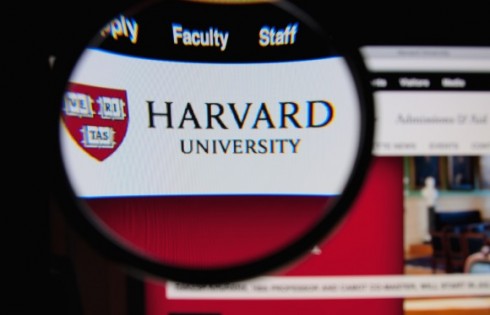
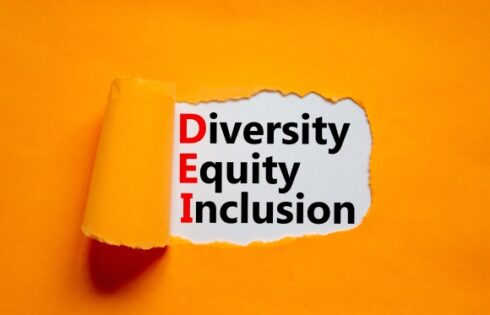
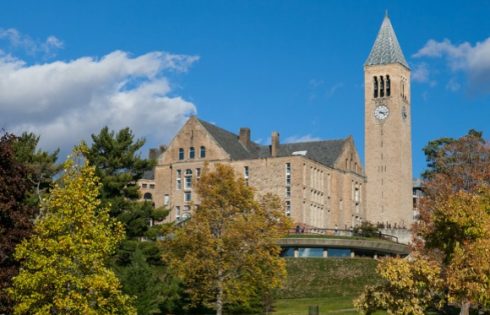
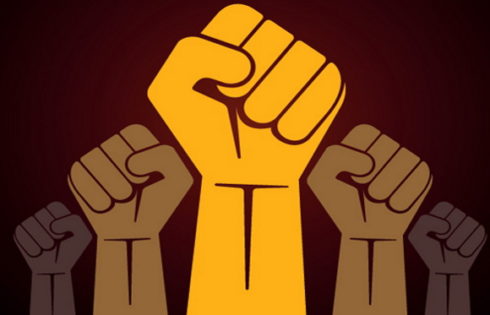
Please join the conversation about our stories on Facebook, Twitter, Instagram, Reddit, MeWe, Rumble, Gab, Minds and Gettr.